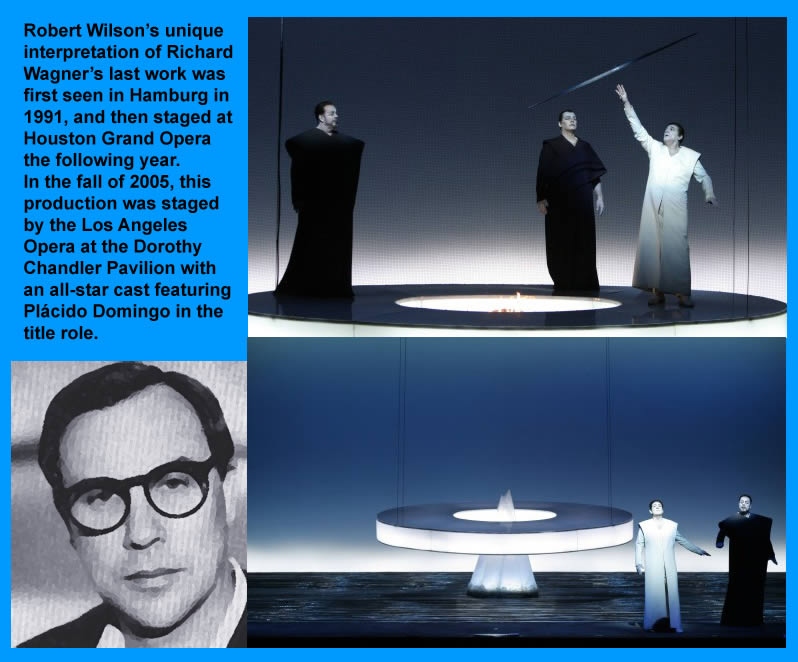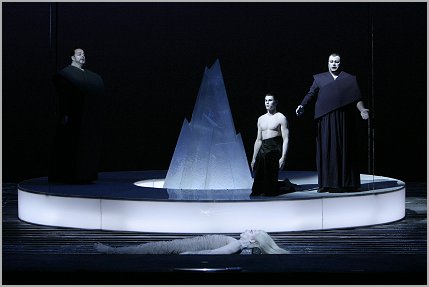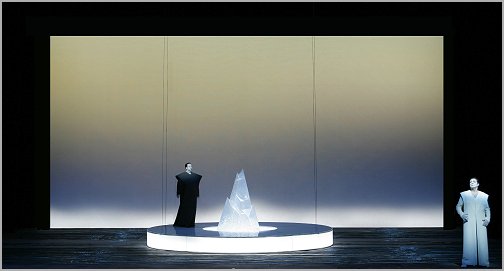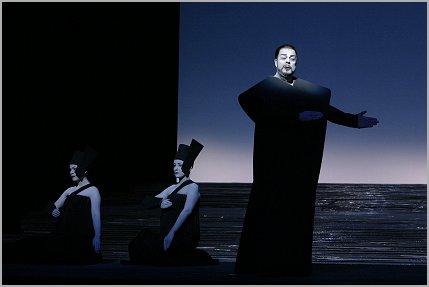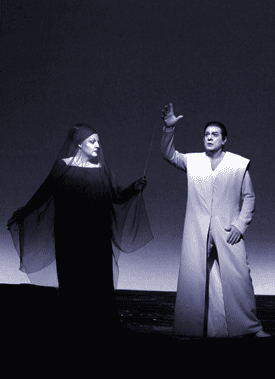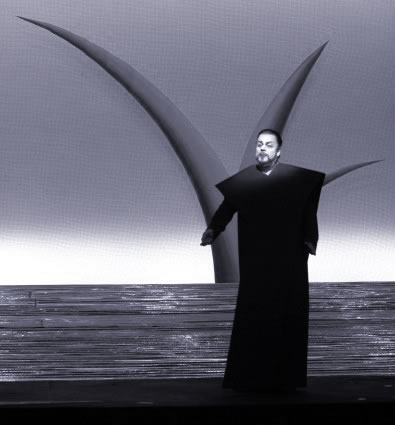Robert Wilson on Parsifal
My general idea about Parsifal was that it is not a religious drama. One reason I like it is because of this moment in the first act when Gurnemanz looks at Parsifal and asks him what he is seeing, and Parsifal says he does not know. I did not want to have fake religious visions on stage. I think Parsifal is more about spirituality.
The make-up is very stylized, it almost looks more eastern than western, but the look is timeless - or full of time. Every gesture was choreographed, and I put a lot of emphasis on how the singers were standing, the way the body was grounded. I thought of gestures like dance, lines drawn into space; the emphasis was on little movements rather than big movements, based on the idea that there is always movement. There is no such thing as no movement, so in stillness you become aware of movement.
Wagner said that the singers should not move around a lot; and I agree. |

